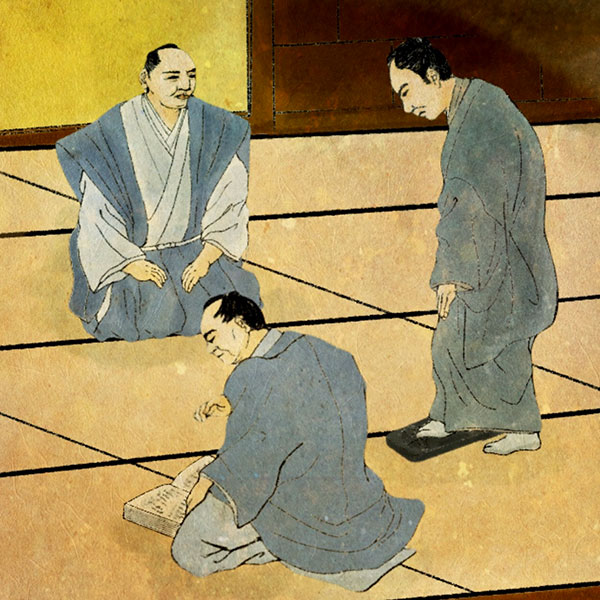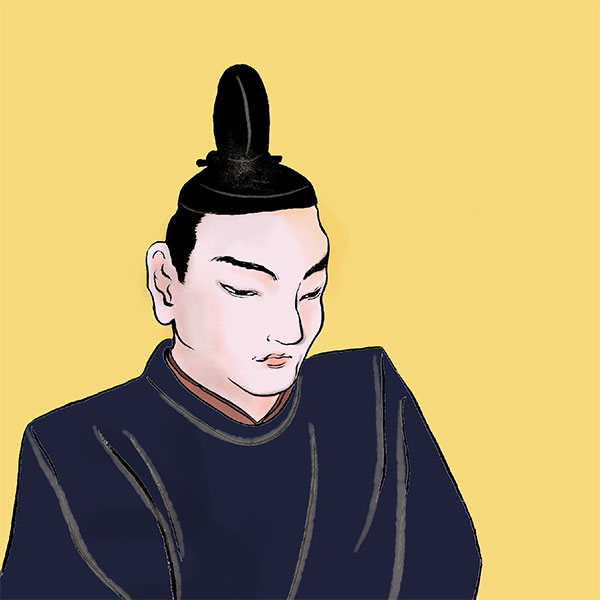Ban on Christianity (1/2)Ieyasu's ban on Christianity

ban on christianity
- Article category
- case file
- Incident name
- Prohibition of Christianity (1612)
- place
- Tokyo
- Related castles, temples and shrines

Edo castle
- people involved
Christianity was brought to Japan by Francis Xavier in 1549. Initially, Japanese Christians (Kirishitan) were recognized for their faith, and during the era of Oda Nobunaga, the number of Christians increased mainly in Kyushu and Kinai. However, after the era of Toyotomi Hideyoshi, regulations became stricter and a ban on Christianity was issued. Although the restrictions were temporarily relaxed after the Edo Shogunate, a ban on Christianity was again issued in 1612. This time, we will take a closer look at one of the several bans on Christianity issued by Ieyasu during the Keicho period.
Until Hideyoshi issued a ban on Christianity.
Before we get into the Edo period, let's briefly touch on Toyotomi Hideyoshi's policy to ban Christianity. Hideyoshi, who followed Nobunaga Oda to become ruler of Japan, initially tolerated Christianity. This is because the Jesuits, who were proselytizing Christianity, accepted trade between South and South Korea only if they approved of the propagation of Christianity.
Guns and gunpowder brought through the Nanban trade were highly coveted by Sengoku warlords, and raw silk from Ming (China), which had been suspended from trade, also came in through the Nanban trade. Raw silk produced in China was in high demand within Japan, and the Nanban trade brought a lot of wealth to military commanders. For this reason, there was no choice but to allow Christian missionary work.
However, with the pacification of Kyushu from July 1586 to April the following year, Hideyoshi felt a sense of crisis towards Christianity. When Hideyoshi entered Kyushu, he was shocked to learn that the Christian feudal lords of Kyushu had donated land to the Society of Jesus. Nagasaki, Urakami, and other areas were donated to the Society of Jesus, and a Christian colony was born within Japan.
Moreover, Christians engaged in many problematic acts, such as destroying shrines and temples and selling Japanese people to Portugal as slaves. According to one theory, there were as many as 50,000 Japanese slaves. Hideyoshi felt a sense of crisis about the movements of these Christians, and questioned Gaspar Coelho, the representative of the Society of Jesus in Japan (associate provincial head). In response, Coelho replied, ``The reason we buy Japanese people is because Japanese people sell people,'' and ``Shouldn't Japan take measures to prevent them from selling people, too?''
As a result of these exchanges, Hideyoshi issued the ``Bateren Expulsion Order'' on June 19, 1587, prohibiting Christian missionary work. He ordered the missionaries to leave the country within 20 days. However, trade between the two countries continued, and it seems that the religion of existing Christians was tolerated.
However, since trade between the South and the South was not prohibited, the missionaries, who were also traders, remained silent, and Christianity was eventually tolerated. However, after the San Felipe Incident in 1596, Hideyoshi hardened his attitude toward Christianity.
The incident occurred when a sailor from the Spanish ship San Felipe, which had washed ashore in Urato, Tosa Province (present-day Kochi City, Kochi Prefecture), said, ``Spain was conquering various regions while proselytizing Christianity, and Japan was also coming under its control.'' He is said to have said something like, ``Yes!'' Hearing this, Hideyoshi issued a ban on Christianity on December 8 of the same year, and arrested a total of 26 people, including Franciscan missionaries who were active in Kyoto and other areas at the time and Japanese Christians. After being carried around the city, they were transported to Nagasaki and executed (the martyrdom of the 26 Japanese Saints).
Afterwards, the cargo of the Hideyoshi San Felipe was confiscated. In response to protests and requests for the return of cargo from the Spanish side, they did not make any concessions because it was ``Japan's rules.'' By the way, the confiscated cargo was apparently used to fund the dispatch of troops to Korea.
Ieyasu initially ``tacitly accepted'' Christianity
Tokugawa Ieyasu came to power after Toyotomi Hideyoshi and established the Edo Shogunate. At first, Christianity was tolerated. This was because they placed importance on trade with Portugal and Spain. In addition to the Jesuits and Franciscans, missionaries from various sects such as the Dominicans and Augustinians visited Japan, and the number of Christians rapidly increased in Nagasaki, Amakusa, Arima, and Kyoto. At its peak, the number of Christians in the country had swelled to about 370,000.
The Nosa Senhora da Graça Incident (also known as the Madre de Deus Incident) occurred in December 1610. The trigger was a dispute between a Japanese shuin ship and a Portuguese ship that occurred in Macau, the Portuguese colony, in October 1608. Sailors of the Shuinsen commit violent acts in Macau, killing and injuring several Portuguese people. As a result of the Macau authorities' actions, approximately 40 Japanese people were killed. At this time, the Macau side's conductor (commander-in-chief) was Andre Pessoa.
Pessoa came to Japan in 1609 and tried to explain the situation directly to Tokugawa Ieyasu, but in the end he was unable to do so. Meanwhile, Harunobu Arima, the lord of the Hizennoe domain (later the Shimabara domain, around Shimabara, Nagasaki prefecture), who had sent the red seal ship, asked Ieyasu to take revenge on Pessoa. In addition, Ieyasu requested permission to dispatch a red seal ship to obtain the Karaki that he had originally wanted.
At the time, trade with Spain and the Netherlands was active, and Ieyasu judged that there would be no problem even if trade with Portugal stopped. Authorizes retaliation and dispatch of red seal ships. On top of that, the shogunate dispatched Daihachi Okamoto as an observer.
Sensing these movements, Pessoa prepares to set sail in an attempt to escape, but Harunobu bombards the ship with Nagasaki Magistrate Fujihiro Hasegawa. After a battle that lasted four days and nights, the ship caught fire and Pessoa set fire to the ship's powder magazine, sinking the ship and ending his life. Although trade with Portugal stopped for a while due to this incident, it resumed in 1611 as a result of negotiations between the two countries.
The Okamoto Daihachi Incident caused the ban on Christianity.
Harunobu Arima took revenge on Portugal for the Nosa Senhora da Graça incident. Harunobu was hoping for the restoration of the former Nabeshima territory as a reward for making the incident a success. What's more, since the Karagi was successfully obtained and delivered to Ieyasu, Ieyasu's confidence must be perfect. However, perhaps because Harunobu was in a hurry, he handed over the fragrant wood to Ieyasu without going through Fujihiro Hasegawa, who had also been ordered by Ieyasu to obtain the Kara wood, and the relationship between the two deteriorated.
Daihachi Okamoto demanded a bribe from Harunobu, who was expecting such a reward, saying, ``I'll do my best, you understand, right?'' They even disguised Ieyasu's red seal and defrauded Harunobu of approximately 6,000 ryo. By the way, Daihachi is a Christian like Harunobu. Harunobu probably felt a sense of kinship with him, so he paid the bribe without question.
However, since there was no news after that, Harunobu directly talked to Masazumi Honda, Daihachi Okamoto's master, and the situation was discovered. Daihachi continued to deny the charges, but under torture he confessed his crimes and was eventually burned at the stake.
However, during the torture, Daihachi secretly reported that Harunobu had a grudge against Fujihiro Hasegawa and was planning to assassinate him. It seems that Harunobu was exaggerating the abusive words he had said after his falling out with Fujihiro, but it seems that Harunobu also had some regrets. However, because of Daihachi's unnecessary words, Harunobu was suspected of plotting to assassinate Fujihiro, and as a result, he was ordered to be exiled to Kai Province and to exchange and confiscate 40,000 koku of Shimabara, and later committed seppuku. I was told. It is said that Harunobu, who was a Christian and could not commit suicide, had his vassals behead him.
Both the mastermind and victim of this incident are Christians. Furthermore, it became the trigger for the Okamoto Daihachi Incident.
The Nosa Senhora da Graça incident also involved Christians. These series of incidents caused by Christians had a major impact on the Shogunate's Christian policies.
Why did Ieyasu issue a ban on Christianity?
In the wake of the Okamoto Daihachi Incident, the Edo Shogunate issued an order banning Christianity on March 21, 1612. Tokugawa Ieyasu had handed over the title of shogun to his son, Hidetada Tokugawa, in 1605, but he remained in power as a great figure.
The article on the ban on Christianity continues.
- people involved

- WriterNaoko Kurimoto(Writer)I am a former travel industry magazine reporter. I have loved history, both Japanese and world history, since I was a child. I usually enjoy visiting temples and shrines, especially shrines, and often do ``pilgrimages to sacred places'' themed around historical figures. My favorite military commander is Ishida Mitsunari, my favorite castle is Kumamoto Castle, and my favorite castle ruins is Hagi Castle. My heart flutters when I see the ruins of battle castles and the stone walls of castle ruins.





